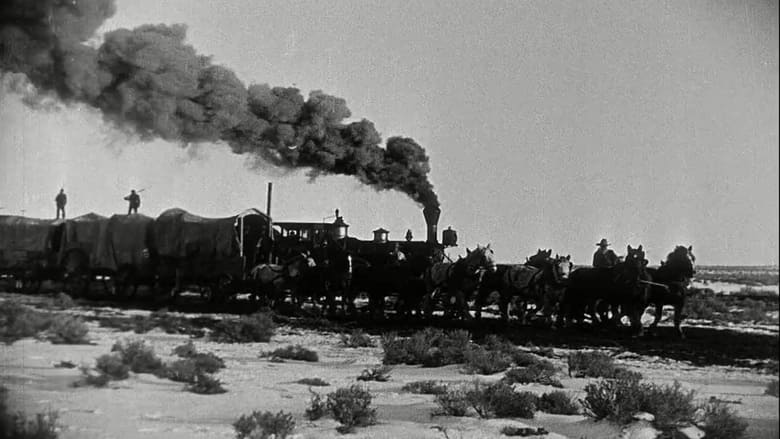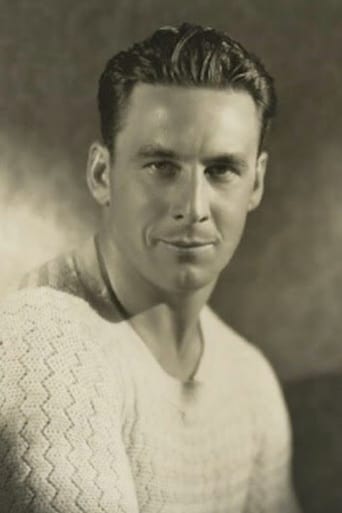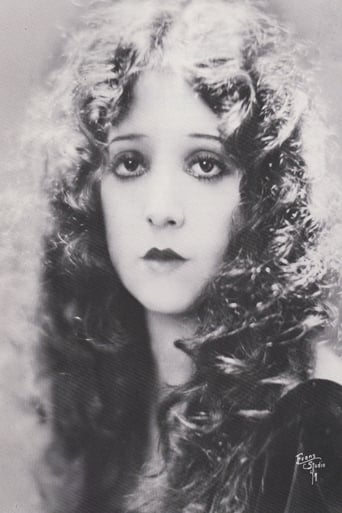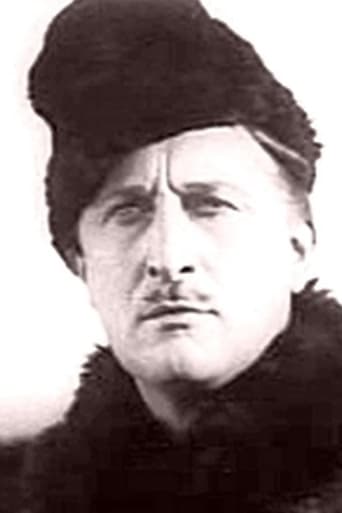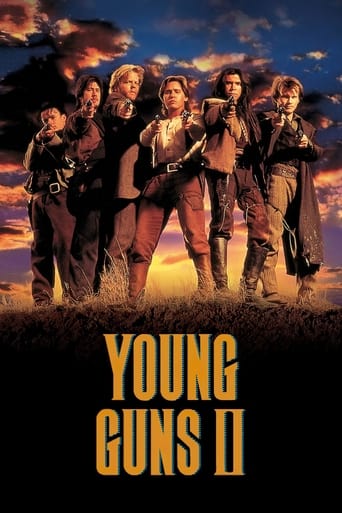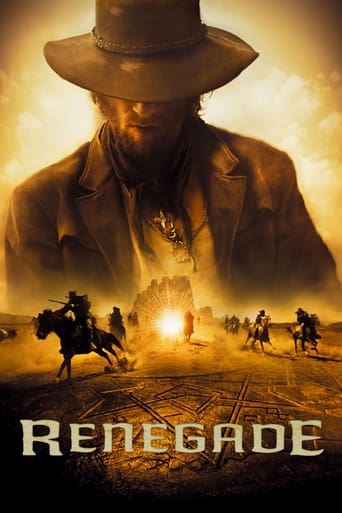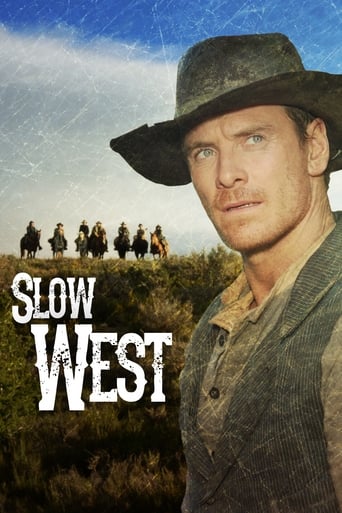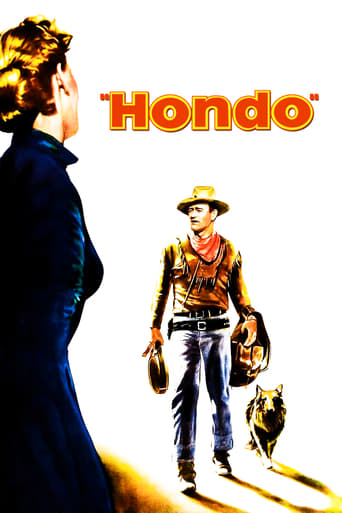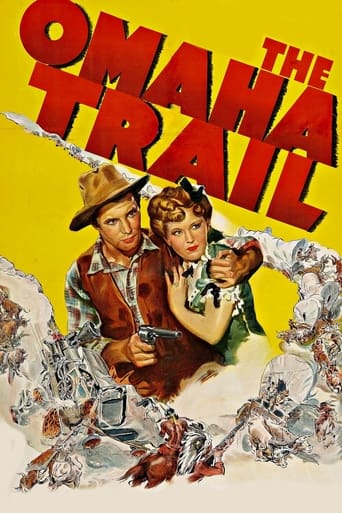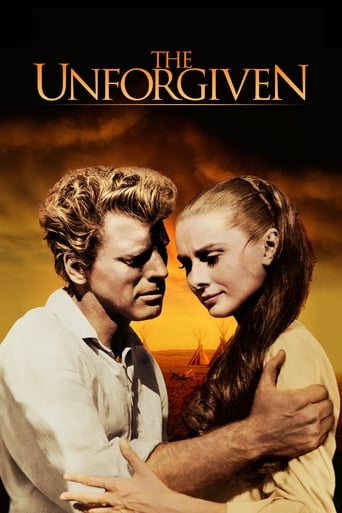The Iron Horse (1924)
Brandon, a surveyor, dreams of building a railway to the west. He sets off with his son, Davy, to survey a route. They discover a new pass which will shave 200 miles off the expected distance, but they are set upon by a party of Cheyenne. One of them, a white renegade with only two fingers on his right hand, kills Brandon and scalps him. Davy is all alone now.
Watch Trailer
Cast


Similar titles
Reviews
Very interesting film. Was caught on the premise when seeing the trailer but unsure as to what the outcome would be for the showing. As it turns out, it was a very good film.
a film so unique, intoxicating and bizarre that it not only demands another viewing, but is also forgivable as a satirical comedy where the jokes eventually take the back seat.
There's no way I can possibly love it entirely but I just think its ridiculously bad, but enjoyable at the same time.
A terrific literary drama and character piece that shows how the process of creating art can be seen differently by those doing it and those looking at it from the outside.
One of greatest John Ford's film, I have ever saw. This epic-scale silent western was hugely influential on outdoor films that followed it due to its large production. The Iron Horse was a massive production that employed over 6,000 people; two temporary cities were built to accommodate them, with 100 cooks on hand to serve meals. The project of Fox was the response to the film The Covered Wagon (1923), the Paramount, which was a huge box office hit draw. Shot on location in Arizona in Monument Valley. John Ford love the location so much due to its romantic scenery, that he film most of his westerns there after this. Surprising this movie wasn't directed by John Ford himself, but Kevin Brownlow and David Gill, but you can truly see Ford's influence in the film. The film is about Davy Brandon (George O'Brien) who follows his father's dream that the entire North American continent will be linked by railroad East to West. However, to make this dream a reality, a clear trail must be found through the Rocky Mountains. However, the trial is dangerous with Indians raids, led by a white man name Peter Jesson or Two fingers (Cyril Chadwick). In some versions he is known as Bauman or Deroux, but its Jesson's first right. Trust me. He is named 'Two fingers' due to the lack of fingers on his right hand. Chadwick really had only two fingers on the one hand having lost the others in a mining accident before he became an actor. When legislation signed by President Abraham Lincoln has made it an official mandate. Davy is hired on as a railroad surveyor by Thomas Marsh (Will R. Walling), the father of his childhood sweetheart Miriam (Madge Bellamy). While Davy hopes to win Miriam's heart, he discover that Miriam is already married and shocked to discover her husband is Peter Jesson, now working with the railroad as a civil engineer. As the Union Pacific crew presses on to their historic meeting at Promitory Point, Davy must find a way to earn Miriam's love and uncover Peter's murderous past. The Iron Horse has become one of the biggest successes of Fox, in the era of silent films. The film overall theme is the rebirth of a nation, by its unification physical and symbolic, after the terrible Civil War that divided the country. The film presents an idealized symbol image of the construction of the American first transcontinental railroad. It culminates with the scene of driving of the golden spike at Promontory Summit on May 10, 1869. A historical real life date. There is a note in the title before this scene that the two original locomotives from 1869 event are used in the film, although this is false - both engines (Union Pacific No. 119 and Central Jupiter) were scrapped before 1910. Still, it's pretty close to what it must have felt to be there witnessing East meeting West. The movie nearly mirrors the ending to Union Pacific (1939). I can't help wondering how many times C. B. DeMille watched the Indian attack on the train before he borrowed many elements from it to use in Union Pacific? I think this movie influence that later film. Still, I can do without the title cards telling us that we are watching a film, or how they film it. It took me out of the film, a bit since it's pretty much telling you, don't get too into the film, it's just a bunch of actors acting. It's breaks like that, that detract the audience from the real story and action. Come on, you don't need that. Make the film seems like it's really happening. The film had some very interesting characters/ I love the unabashed masculine chivalry and heroism by the hero, Davy. Despite the oddly wild air swinging badly done fight scenes. I love the loving, strong-willed, independent women as seem in Miriam. It's odd seeing an old film where women are shooting guns and going to battle. The supporting comedic characters were also funny. You get a bit of the Victor Mclaglen and Ward Bond lovable misfits that permeated Ford's later films in Sgt. Slattery and Cpl. Casey. You get a really funny part in similar scenes such as the dentist, getting the guys to join the fight by having a stampede, and a lot of weird Irish jokes. The action was well-done. It was just as good as any modern film. There are two versions of this film. John Ford used two negative, simultaneously, which was a common practice at the time. One was for use in the United States that runs for 149 minutes and the other for other countries which 133 minute runtime. The international has a lot secondary takes and other shots unused in the editing room just to note. Still, the movie goes a little too long after the Indian battle in the American version. The International version is more tightly edited. Many years the only copy that was shown was the international version. For years, the American version wasn't available for viewing. All early Fox Films original negatives were destroyed in a fire in 1937 until it was found. The negative American original, was restored in 2007 and a new musical background was commissioned and now both can be seen. The score is likewise very good. Just wish, we could had heard the traditional tune of the railroad songs like 'Drill Ye Tarrier, Drill". There is a black & white version, Hand-coloring and a tan brown version. Watch the tan version, it looks like a dusty Western, indeed. Unless you are a silent film enthusiast or an aficionado of Westerns then you are probably unfamiliar with this movie so check it out. Overall I am very happy to have this in my collection
I just got to see this and it is a great movie! Classic John Ford! I won't repeat what the other reviews say but rather add some things not pointed out by others: The barroom fight scene is amazing. The crowd hold up lanterns to illuminate the brawl and this creates an amazing effect. The crowd surround the two men fighting so you can't see much of the fight which adds to the realism. Only a very confident director would 'hide' a vicious fist fight inside a crowd scene. The effect makes the fight appear to be viciously real. The voice over implied that Ford goaded George O'Brien, a real life navy boxer, into really fighting the double for the villain ( the double is never shown face front in the fight).The final fight scene and shoot out is also very impressive in it's realism. Ford adds nice touches like the wounded man smoking calmly during the fight and one of the Indians falling to his death with his dog coming up to sit by his dead Indian master. Ford's ability to add tiny details adds to every scene.Most of the scenes are shot in snow and one blizzard and you can often see the breath of the actors in a scene. It must have been very cold but the effects build up and add to the realism that this was filmed in the winter and not the summer.This is a great film and shows John Ford already a master of his game. Everyone should see it and not be freaked out that it is a silent. The music is fantastic and you forget it is a silent. In a silent the visuals rule rather than words anyway and Ford would tear pages of script away. He did not need words.J E F
Previous to directing The Iron Horse, John Ford had been known as the director of a few dozen B westerns, most of them probably lost by now and most of them starring Harry Carey. In getting the assignment for The Iron Horse, Ford got his first really big budget to work with from Fox Films. The end result was a film which along with Paramount's The Covered Wagon became the models for the big epic westerns. And it launched a whole new career for John Ford that netted four Oscars as a Best Director, though not one of them was for a western.The story of The Iron Horse begins here in Springfield, Illinois where the children of Will Walling a contractor and surveyor James Gordon are playing while their fathers are meeting with none other than Abraham Lincoln at that time just a state legislator. Both would like to see a transcontinental railroad and Gordon is going to make good on it by going west and surveying the best route through the Rocky Mountains. But out west the surveyor is killed by hostile Indians led by a white man with only two fingers on his right hand. But the boy hides and is missed and grows up to be frontiersman George O'Brien.Twenty years later in the midst of the great Civil War, President Abraham Lincoln signs the legislation authorizing the building of such a railroad though the real work doesn't start until the war is over. By that time Will Walling is working on building the Union Pacific and his daughter has grown up to be Madge Bellamy. She's engaged to Cyril Chadwick another surveyor, but Chadwick has some mixed loyalties.Those of you who saw the epic DeMille production Union Pacific will recognize from this point some of the same plot situations. No doubt Cecil B. DeMille borrowed quite a bit from The Iron Horse, but I will say DeMille wrecked his train during the Indian attack and it was a beauty. But Ford with all the extras involved could say that his was to use the cliché, a cast of thousands.The real evil villain here just as Brian Donlevy was in Union Pacific is Fred Kohler. He's behind a lot of the scheming as he's a large landowner where the Cheyenne Indians seem to function as a personal army. Now that was a bit much to swallow. As was the fact that when the grown up George O'Brien first makes his appearance he is identified as a Pony Express rider. Everyone knows that the Pony Express was a year long phenomenon that the Civil War closed down and the telegraph and railroad put out of business permanently. But Ford was also interested in the poetry of the west rather than the facts. Still the action of The Iron Horse holds up remarkably well today and the careers of both John Ford and George O'Brien were made with this film.
Thursday July 15, 7pm, The Castro, San Francisco"In the heart of one man there is no rivalry" Set amid the romance and mythology of the American West, construction of the Transcontinental Railroad is recounted in cinematic splendor by Hollywood's master of the genre. Bestowing an almost religious patriotism to the story, central characters Dave Brandon (George O'Brien) and Miriam Marsh (Madge Bellamy) are introduced as the childhood neighbors of Abraham Lincoln. Years pass, expansion progresses and they reacquaint when he leaps aboard her moving train to escape a band of Indians. The pioneers fight harsh conditions, crooked businessmen and each other as the rails push toward May 10, 1869 and the Golden Spike.A defining landmark in film history and the greatest western of the silent era, director John Ford's crowning achievement was The Iron Horse. Filmed on a magnificent scale with memorable performances by O'Brien, Bellamy, J. Farrell Macdonald and a cast of thousands, the sentimental idealization of historic events and exquisite photography were simply unequalled.


